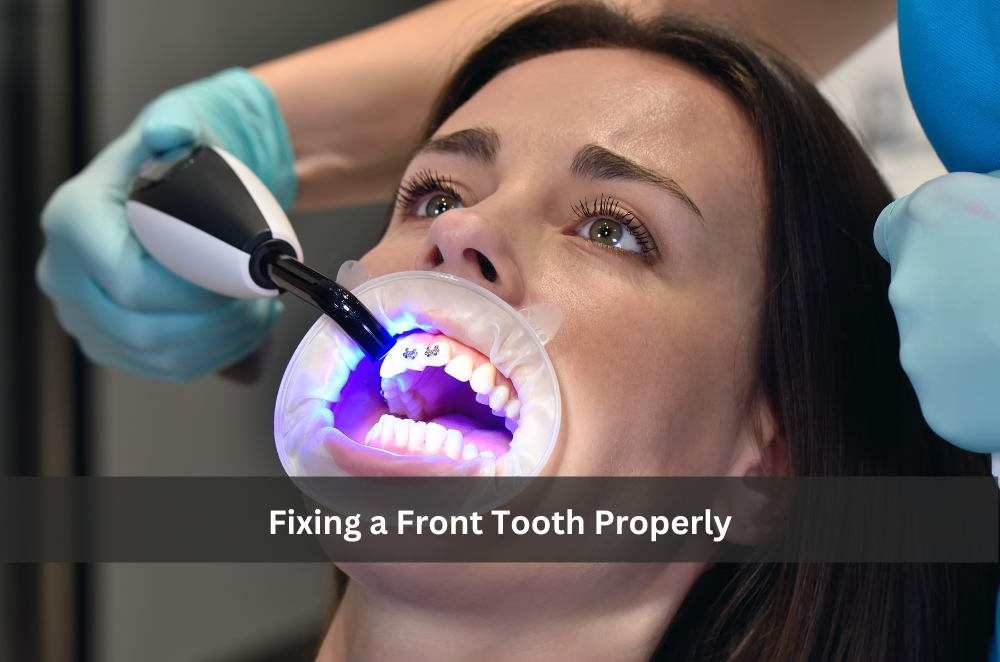Front teeth don’t just chip; they shatter plans. When a break happens, pain and visibility collide, and suddenly you’re negotiating meals, meetings, and confidence. The most brilliant play is prompt, evidence-based care that protects the nerve, restores function, and looks like nothing happened. That’s where restorative dental services for broken teeth come in—the umbrella for assessing cracks, stabilising fragments, choosing conservative materials, and planning long-term durability, not just a quick patch. It’s less about vanity, more about preserving structure and bite. Leave it too long and the fracture deepens, sensitivity spikes, and costs climb. Move early and you keep options open, including minimally invasive fixes—done right, quickly, and comfortably today, locally.
What’s the most brilliant move after a front tooth breaks?
Get a same-day assessment to protect the nerve and stabilise the tooth. DIY band-aids are temporary; timing determines the treatment you’ll keep.
A clean diagnosis sets the course: enamel-only chips often suit bonding, while deeper cracks may need partial crowns or endodontics. We also screen for trauma to neighbouring teeth and check the bite so fresh edges don’t collide. Pain, temperature sensitivity, or a darkening tooth are signs of a problem; cracks spread under normal chewing. Moisture control, shade matching, and occlusion mapping may sound technical, but they’re the key to repairing or preventing tooth failure. In short: act fast, choose conservative where possible, and prioritise stability over speed.
• Avoid biting on the injured tooth
• Keep the area clean with gentle rinses
• Store fragments in milk if found
When you’re weighing first steps, this plain-English explainer covers urgent dental care preparation to keep things stable until you’re in the chair.
Which treatments actually look natural on front teeth?
Composite bonding and modern ceramics both mimic enamel translucency; the choice depends on crack depth, load, and budget.
Microchips and edge wear often suit a layered composite, shaped chairside with minimal drilling. For larger damage, ceramic onlays or crowns add strength and long-term colour stability. We weigh bite forces, parafunction (night grinding), and gum health before choosing materials. Adhesive dentistry has leapt forward: better primers, brighter curing lights, and improved isolation make bonds more reliable. The goal is simple—repair that disappears in conversation. We also balance aesthetics with biology: smooth margins, calm gums, and cleaning that’s straightforward at home.
• Choose minimally invasive options first
• Match materials to bite forces
• Prioritise shade stability over time
How do you prevent the next break?
Protect the repair with good habits and, when needed, protective gear; prevention saves enamel and money.
Repairs fail due to the same stresses that caused the tooth to break: hard bites, grinding, and neglected micro-cracks. A short soft-diet window helps bonding mature, while a custom night guard tames clenching forces that overload edges. Sport? A fitted mouthguard beats boil-and-bite for retention and impact dispersion. Hygiene isn’t just polishing—interdental cleaning keeps margins healthy, which protects the adhesive seal. Six-monthly reviews let us spot hairline changes before they become Monday emergencies. If a repair ever feels “high” or rough, don’t wait; minor adjustments prevent bigger fractures.
Conclusion: A broken front tooth isn’t the end of a smile—it’s a signal to act with a clear, staged plan. Early assessment, conservative techniques, and sensible aftercare keep the nerve calm, the enamel supported, and the repair invisible in real life. If you’re building a routine that protects your repair and overall oral wellness, these advanced dental care services round out the basics without the jargon.





Comments